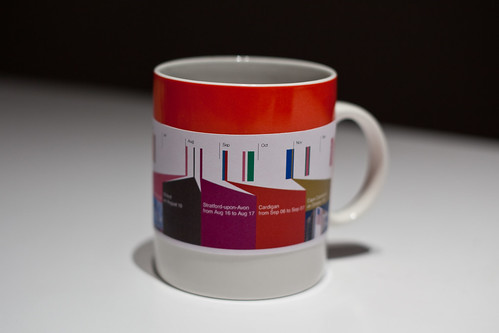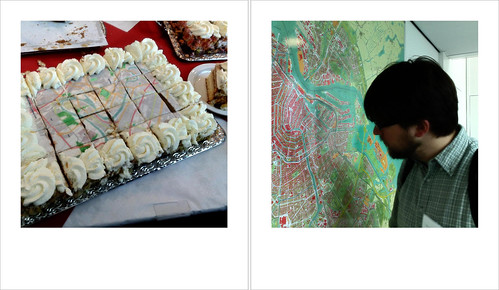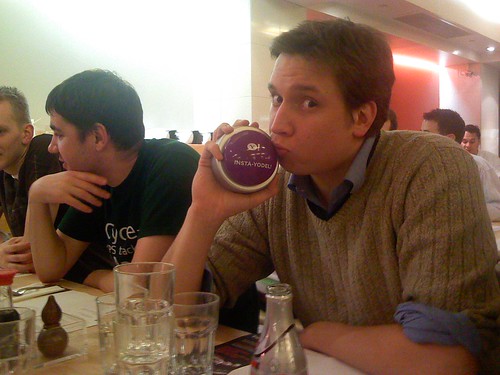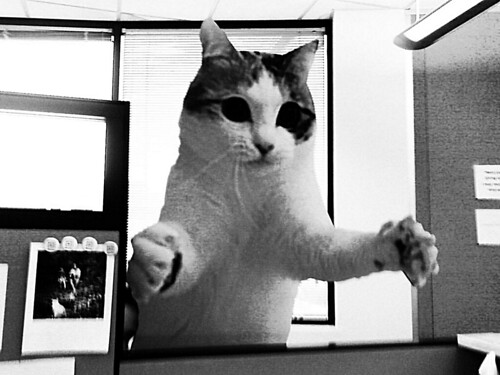Matt Biddulph takes lovely photos. And apparently when he isn’t taking photos he find times to be the founder and CTO of Dopplr. Which makes us happy, because we’re big Dopplr fans. If Flickr is the site where photos become social objects, Dopplr is that site for travel. Except with personal informatics, and positionally dependent rainbows. (we have a well documented weakness for rainbows)
Dopplr is consistently one of the most interesting projects tying together the loosely joined datastreams into a cohesive whole, and Matt’s meditations on how to do that are not to be missed.
1. What are you currently building that integrates with Flickr, or a past favorite that you think is cool, neat, popular and worth telling folks about? Or both.
Matt: I’m the CTO at Dopplr, and we use Flickr all over our site to integrate our users’ travel pictures and illustrate places in our “Social Atlas”. We’re particularly happy with Flickr’s recent integration of Dopplr places into their automatic machine tag handling
This year we’ve been radically upgrading our city information pages (e.g. http://dplr.it/san-francisco) and Flickr photos have been an important part of that. Designer Matt Jones came up with a combination of rich information visualisation and beautiful images, combining sparklines with photos of cities that we source from Flickr’s geotagged Creative-Commons licensed contributions.
The Flickr API is key to how these pages are made. Although ‘interestingness’ is a powerful sorting metric, we found that just asking for the most interesting picture of a city didn’t always give us the right aesthetic (just as Dan Catt’s pandas occasionally show a preference for bikinis). Instead, our developer Tom Insam built a workflow tool that shows site admins a list of the top pictures per place. It displays a preview of a sample data visualisation overlay, and limits the pictures to those licensed for derivative commercial works.
An admin can quickly work through our most popular cities, choosing pictures and a few design settings (such as whether to use black or white text for best contrast). Once a month, a script runs through our chosen images, regenerating this month’s data viz and removing any photos whose license has changed since our last check. This happens more often than we expected.
2. What are the best tricks or tips you’ve learned working with the Flickr API?
Matt: To make our city page Flickr integration possible, we had to correlate our city database with Flickr’s geotagging data. Our data is sourced from GeoNames and augmented by us and our users. Luckily Flickr provides a handy reverse-geocoder that maps a latitude/longitude point to an identifier. As a bonus, Flickr now uses the same “WOE IDs” as Yahoo’s Geo APIs, meaning that this correlation between our IDs and theirs can be used to lookup other rich geo data elsewhere on our site. We also started supporting WOE IDs in our own API in return, and we were very happy when Flickr started linking to our city pages from their own place pages.
Another tip for integrating Flickr API calls into web pages is to consider whether you can achieve a feature with purely client-side code. Rather than have our webserver tied up waiting for an HTTP request to return from Flickr, in certain places we serve up jQuery code to perform Flickr queries from the clientside, inserting the results into the page via ajax.
3. As a Flickr developer what would you like to see Flickr do more of and why?
Matt: I’m in complete agreement with Kellan — that realtime APIs are going to be big. For example, I want the ability to register an interest in something (“the latest CC-licensed photos of London”) and get the data pushed to me whenever new results are ready. This might be implemented using Web Hooks, like when github makes an HTTP POST for you whenever you push into a repository. It might be over XMPP, as used by Fire Eagle, when services register for publish-subscribe notifications of new location pings. The choice of technology is less important than the new possibilities (and design challenges) of the realtime web.
4. What excites you about Flickr and hacking? What do you think you’ll build next or would like someone else to build so you don’t have to?
Matt: The best thing about Flickr for hacking is the sheer amount of data that the community collects. The recent release of shapefiles derived from tags and geotagging is very exciting and has huge possibilities for geo mashups. I’m looking forward to firing up a Maps From Scratch instance and figuring out how to combine it with data from our service. There are some screenshots of my early experiments using Flickr’s clustr tool on our Social Atlas data at http://www.flickr.com/photos/mbiddulph/tags/clustr/
5. Besides your own, what Flickr projects and hacks do you use on a regular basis? Who should we interview next?
Matt: I nominate Dave Beckett, author of the C library and commandline tool Flickcurl because I use the commandline tool as a quick interface to Flickr data all the time. As a devotee of dynamic languages, I’m interested to hear about what it’s like to program the web in C.












